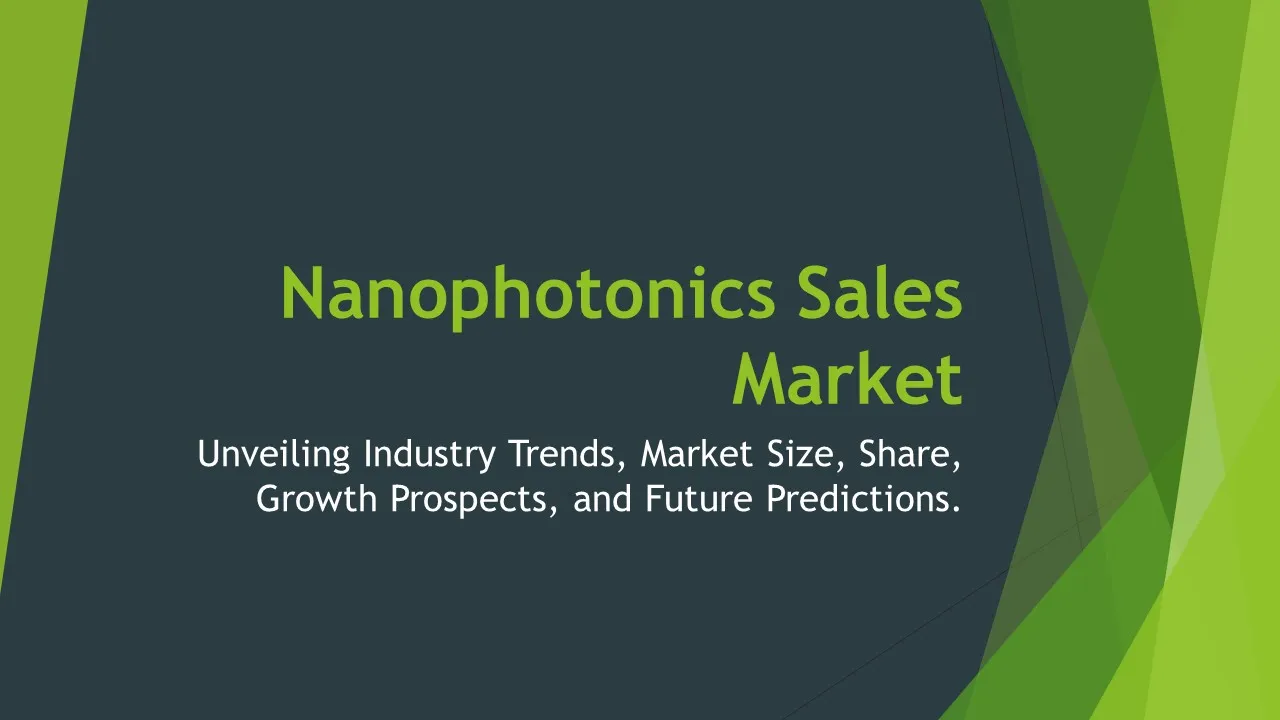Laser Marking Machine
Laser Marking Machine Market Segments - by Product Type (Fiber Laser Marking Machine, CO2 Laser Marking Machine, UV Laser Marking Machine, Green Laser Marking Machine, YAG Laser Marking Machine), Application (Automotive, Electronics, Medical, Packaging, Aerospace, and Others), Distribution Channel (Direct Sales, Distributor Sales), Technology (Diode-Pumped, Lamp-Pumped, Fiber Laser, and Others), and Region (North America, Europe, Asia Pacific, Latin America, Middle East & Africa) - Global Industry Analysis, Growth, Share, Size, Trends, and Forecast 2025-2035
- Report Preview
- Table Of Content
- Segments
- Methodology
Laser Marking Machine Market Outlook
The global laser marking machine market is projected to reach approximately USD 4.2 billion by 2035, growing at a CAGR of around 6.5% during the forecast period of 2025 to 2035. This growth is primarily driven by the rising demand for advanced marking technologies across various industries, such as automotive, electronics, and packaging. Furthermore, the increasing adoption of laser marking machines for traceability and product identification purposes is fuelling market expansion. The capability of laser marking machines to produce high-precision, durable, and permanent marks on a wide range of materials, including metals, plastics, and glass, is further contributing to their popularity. Additionally, the shift towards automation and Industry 4.0 is creating lucrative opportunities for the laser marking machine market to flourish.
Growth Factor of the Market
Several significant factors are contributing to the growth of the laser marking machine market. Firstly, the increasing emphasis on high-quality product labeling and traceability is pushing various sectors to adopt laser marking technologies. Marking and engraving through lasers ensure precision and permanence, which is essential for compliance with regulatory standards, particularly in industries like pharmaceuticals and food & beverage. Additionally, technological advancements have led to more efficient and compact laser marking machines, making them accessible to small and medium enterprises (SMEs), thereby amplifying market demand. Another driving factor is the rising adoption of eco-friendly and non-contact marking solutions, which align with the global trend toward sustainability. Furthermore, the expansion of automation in manufacturing processes is facilitating the integration of laser marking systems, enhancing production efficiency and reducing operational costs.
Key Highlights of the Market
- The global laser marking machine market is projected to witness a CAGR of 6.5% from 2025 to 2035.
- Increasing demand for precise and high-quality markings across various industries is a primary growth driver.
- Technological advancements are leading to the development of compact and efficient marking systems.
- Eco-friendly and sustainable marking solutions are gaining popularity in compliance with global regulations.
- The expansion of automation in manufacturing processes is facilitating the adoption of laser marking technologies.
By Product Type
Fiber Laser Marking Machine:
Fiber laser marking machines have gained significant traction in recent years due to their versatility and efficiency. These machines utilize a fiber optic laser source, which is highly effective for marking on various materials, including metals and plastics. Fiber lasers are known for their high beam quality and efficiency, which allows for faster marking speeds and lower operational costs. Moreover, their maintenance-free operation and longer lifespan compared to traditional lasers have made them a preferred choice for industries requiring high-volume production. As a result, the fiber laser marking machine segment is expected to hold a significant market share during the forecast period, driven by increasing demand from sectors like automotive and electronics.
CO2 Laser Marking Machine:
CO2 laser marking machines are widely recognized for their capability to mark non-metal materials such as wood, glass, and plastics. Utilizing a CO2 laser beam, these machines are effective in creating permanent marks with high precision, making them suitable for applications in packaging and consumer goods. The adaptability of CO2 lasers to different materials is a major factor propelling their demand. Furthermore, as industries continue to seek ways to improve product branding and identification, CO2 laser marking machines are expected to witness sustained growth. The increasing trend towards personalized products and packaging solutions is also fostering the expansion of this market segment.
UV Laser Marking Machine:
UV laser marking machines are becoming increasingly popular due to their ability to create high-resolution markings on sensitive materials without causing thermal damage. These machines utilize ultraviolet light to produce precise marks, making them ideal for applications in the medical and electronics sectors, where precision is paramount. The growing demand for miniaturization in electronics is further bolstering the adoption of UV laser marking technologies. Furthermore, as manufacturing processes evolve, the ability to mark on a wide range of materials, including glass and certain plastics, positions UV lasers as a versatile choice for various industries. This segment is anticipated to experience robust growth in the coming years.
Green Laser Marking Machine:
Green laser marking machines operate at a wavelength of 532 nm, which allows them to mark materials such as metals and plastics with exceptional clarity. These lasers are particularly effective for applications requiring high contrast and visibility. As more industries focus on enhancing product quality and visual appeal, the demand for green laser marking technology is expected to rise. Additionally, the ability of green lasers to mark delicate and heat-sensitive materials without causing damage makes them suitable for applications in the medical and aerospace industries. This segment is likely to contribute positively to the overall growth of the laser marking machine market.
YAG Laser Marking Machine:
YAG (Yttrium Aluminum Garnet) laser marking machines have also established a foothold in the laser marking market, particularly in applications that require deep engraving capabilities. These machines are known for their high energy output, making them suitable for marking on tough materials such as metals and ceramics. The durability and reliability of YAG laser systems have positioned them well within industries that require high-performance marking solutions, such as automotive and manufacturing. Despite the growth of newer technologies, YAG lasers continue to be relevant due to their robust performance and efficiency, ensuring their place in the market.
By Application
Automotive:
The automotive industry significantly contributes to the laser marking machine market, as marking plays a critical role in vehicle identification, traceability, and branding. Laser marking ensures that essential information such as VIN numbers, logos, and barcodes are applied with high precision and permanence, which are crucial for compliance with safety regulations. Furthermore, the automotive sector's ongoing transition towards smart manufacturing and automation has led to increased adoption of laser marking technologies, making this segment one of the largest contributors to market growth.
Electronics:
In the electronics sector, laser marking machines are widely used for labeling components and products, ensuring traceability and brand recognition. The precision offered by laser marking is essential for small-sized components, where traditional marking methods may fall short. Furthermore, the industry's push towards miniaturization and increasing complexity of electronic devices are driving demand for high-resolution marking solutions. As the electronics market continues to expand, laser marking machine applications are expected to grow concurrently, particularly in sectors such as consumer electronics and telecommunications.
Medical:
The medical sector heavily relies on laser marking as it provides a sterile and non-contact method for labeling medical equipment and devices. The ability to create permanent and legible markings on instruments is vital for compliance with strict regulatory standards. Moreover, with the increasing demand for traceable surgical instruments and medical devices, the adoption of laser marking technology is anticipated to rise. The trend towards personalized medicine also opens avenues for customization in medical labels, further enhancing the relevance of laser marking in this industry.
Packaging:
Packaging applications are increasingly adopting laser marking machines for product labeling and branding purposes. The ability to create high-quality marks without the use of inks or adhesives makes laser marking an environmentally-friendly choice, aligning with the growing sustainability trends in the packaging industry. Furthermore, as consumers demand more information and transparency regarding product origins, laser marking solutions are being utilized to print barcodes, expiration dates, and QR codes effectively. This segment is poised to experience substantial growth as brands seek innovative ways to enhance product visibility and traceability.
Aerospace:
The aerospace industry has stringent requirements for marking and labeling due to the high stakes involved in safety and compliance. Laser marking machines provide a reliable solution for marking critical components with durability and precision. As the aerospace sector continues to innovate and expand, the demand for high-quality marking solutions that adhere to regulatory standards will grow. Additionally, the advent of lightweight materials and complex geometries in aircraft manufacturing is further driving the need for advanced marking technologies, ensuring that this segment remains a significant contributor to market growth.
By Distribution Channel
Direct Sales:
Direct sales play a crucial role in the laser marking machine market, allowing manufacturers to establish a direct relationship with customers. This approach facilitates a better understanding of customer requirements and provides an opportunity for tailored solutions to meet specific industry needs. Moreover, direct sales often come with the added benefit of enhanced customer support and service, which can be critical for industries requiring high precision and reliability. As manufacturers emphasize building long-term relationships with their clients, the direct sales channel is expected to remain a vital contributor to the market.
Distributor Sales:
Distributor sales are another significant channel in the laser marking machine market, enabling manufacturers to expand their reach and tap into various regional markets. Distributors often have local expertise and established networks, allowing them to effectively promote and distribute laser marking machines to end-users. This channel can enhance market penetration, especially in emerging markets where manufacturers may lack a direct presence. As the laser marking machine market continues to expand globally, distributor sales will play a pivotal role in ensuring that advanced marking technologies reach a broader audience.
By Technology
Diode-Pumped:
Diode-pumped laser marking machines are gaining popularity due to their efficiency and compact design. Utilizing semiconductor diodes to pump the laser medium, these machines are known for their high performance and low maintenance requirements. They offer a reliable solution for marking various materials, making them suitable for multiple industries. The trend towards miniaturization and energy efficiency is likely to drive the adoption of diode-pumped marking technologies, as manufacturers seek sustainable and effective solutions in their production processes.
Lamp-Pumped:
Lamp-pumped laser marking machines have been widely used in various applications due to their cost-effectiveness and versatility. These machines utilize flashlamps to excite the laser medium, enabling them to generate high-energy laser beams suitable for a diverse range of materials. However, they do require more maintenance and have a shorter lifespan compared to newer technologies. Despite the emergence of advanced laser systems, lamp-pumped machines continue to be relevant in specific applications where cost and flexibility are paramount, thus ensuring their place in the market.
Fiber Laser:
Fiber laser marking technology is at the forefront of the industry due to its remarkable efficiency, longevity, and precision. Fiber lasers utilize optical fibers doped with rare-earth elements to generate high-quality laser beams, allowing for quick and accurate marking on various surfaces, including metals and plastics. Their compact design and low maintenance needs enhance their appeal, making them a preferred choice for numerous industries. As the demand for high-speed and high-precision marking solutions continues to grow, fiber laser technologies are poised to dominate the market.
Others:
The "Others" category encompasses various laser marking technologies that may not fit into the traditional classifications. This includes technologies such as solid-state lasers and hybrid systems that combine multiple laser types. These innovative solutions are being developed to meet specific industry requirements, offering unique advantages in terms of speed, precision, and material compatibility. As industries continue to evolve and demand more specialized marking solutions, the "Others" segment is expected to witness growth through technological innovation and advancements, contributing to the overall market dynamics.
By Region
The laser marking machine market is witnessing substantial growth across various regions, each contributing uniquely to the global dynamics. North America holds a significant market share, accounting for approximately 35% of the global revenue, driven primarily by the robust automotive and electronics sectors. The increasing demand for advanced manufacturing solutions and strict regulatory compliance in this region further propels the adoption of laser marking technologies. Additionally, the presence of key market players and innovative startups fosters a competitive environment, ensuring continuous advancements in technology and applications. The North American laser marking machine market is expected to maintain a steady CAGR of 5.8% during the forecast period.
In contrast, the Asia Pacific region is projected to experience the highest growth rate, with a CAGR of around 7.5% from 2025 to 2035. The rapid industrialization and urbanization in countries such as China, India, and Japan are driving significant investments in advanced manufacturing technologies. The increasing focus on product traceability and quality assurance in industries like pharmaceuticals and electronics is boosting the demand for laser marking solutions in this region. Furthermore, the growing trend of automation and smart manufacturing is amplifying the adoption of laser marking machines, positioning the Asia Pacific region as a key player in the global market.
Opportunities
The laser marking machine market presents various opportunities for growth and expansion in upcoming years. One significant opportunity lies in the increasing need for personalized and customized marking solutions across diverse industries. As businesses strive to enhance their branding efforts and improve customer engagement, the demand for intricate and unique markings is expected to rise. This trend is particularly prevalent in sectors such as packaging, where companies aim to provide distinctive identifiers for their products. By capitalizing on this demand, manufacturers of laser marking machines can develop innovative solutions that cater to the evolving needs of customers and establish a strong position in the market.
Another opportunity for the laser marking machine market stems from the growing global emphasis on sustainability and eco-friendly practices. Businesses across various sectors are prioritizing the adoption of green technologies, and laser marking systems, which do not rely on consumables like inks or solvents, are well-positioned to meet these demands. Furthermore, advancements in laser technology are enabling manufacturers to produce more energy-efficient marking solutions, aligning with corporate sustainability goals. By focusing on environmentally friendly technologies and processes, companies can not only expand their market reach but also contribute positively to the global push for sustainable manufacturing practices.
Threats
Despite the promising growth prospects, the laser marking machine market faces several threats that could hinder its development. One of the primary challenges is the rapid pace of technological advancements, which can lead to obsolescence for existing products and solutions. Companies operating in this market must continuously innovate and adapt to remain competitive, requiring significant investments in research and development. Moreover, the rise of alternative marking technologies, such as inkjet and thermal printing, poses a competitive threat as businesses may opt for these solutions due to their lower initial costs. As a result, laser marking machine manufacturers must not only focus on product development but also on building strong customer relationships to retain market share.
Another threat to the laser marking machine market is the increasing cost pressures faced by manufacturers in various industries. As businesses strive to optimize their operational expenses, they may seek to cut costs by opting for cheaper marking solutions, potentially impacting the demand for high-end laser marking machines. This price sensitivity can lead to intense competition among manufacturers, which may result in reduced profit margins. Additionally, fluctuations in the prices of raw materials and components used in laser marking machines can further exacerbate cost challenges. Manufacturers must develop effective strategies to navigate these threats and sustain profitability in an ever-evolving market landscape.
Competitor Outlook
- TRUMPF
- Gravotech
- LaserStar Technologies
- Mecco
- Epilog Laser
- Han's Laser Technology
- Universal Laser Systems
- KEYENCE Corporation
- Sisma S.p.A.
- Trotec Laser GmbH
- Coherent, Inc.
- Laselec
- FANUC Corporation
- SCANTECH
- HSG LASER
The competitive landscape of the laser marking machine market is characterized by the presence of several key players striving to gain a competitive edge through technological innovation, product diversification, and strategic partnerships. These companies are investing heavily in research and development to introduce advanced laser marking solutions that cater to the specific needs of various industries. Additionally, collaboration with other technology providers and suppliers helps these manufacturers enhance their product offerings and expand their market presence. The growing emphasis on automation in manufacturing processes is prompting many companies to integrate laser marking systems into their production lines, further intensifying competition within the market.
Among the prominent players, TRUMPF stands out for its extensive experience and expertise in laser technology. The company offers a comprehensive range of laser marking machines that cater to different applications across multiple industries. Their focus on innovation has led to the development of advanced marking systems that provide high speed and precision, addressing the increasing demands of modern manufacturing. Likewise, KEYENCE Corporation is known for its cutting-edge laser marking solutions that combine high performance with user-friendly interfaces, making them accessible to a broader range of customers. Their commitment to continuous improvement and customer satisfaction has solidified their position in the market.
Another significant player, Han's Laser Technology, has established a strong global presence through strategic acquisitions and partnerships. The company offers diverse laser marking machines that cater to various sectors, including automotive, electronics, and medical. Their focus on integrating automation technologies into their laser marking solutions has enabled them to address the growing demand for efficient production processes. Additionally, Trotec Laser GmbH is recognized for its innovative approach to laser marking, offering advanced systems designed for high-speed marking on various materials, further enhancing their competitive positioning in the market. As the laser marking machine market continues to evolve, these key players will play a crucial role in shaping its future.
1 Appendix
- 1.1 List of Tables
- 1.2 List of Figures
2 Introduction
- 2.1 Market Definition
- 2.2 Scope of the Report
- 2.3 Study Assumptions
- 2.4 Base Currency & Forecast Periods
3 Market Dynamics
- 3.1 Market Growth Factors
- 3.2 Economic & Global Events
- 3.3 Innovation Trends
- 3.4 Supply Chain Analysis
4 Consumer Behavior
- 4.1 Market Trends
- 4.2 Pricing Analysis
- 4.3 Buyer Insights
5 Key Player Profiles
- 5.1 Mecco
- 5.1.1 Business Overview
- 5.1.2 Products & Services
- 5.1.3 Financials
- 5.1.4 Recent Developments
- 5.1.5 SWOT Analysis
- 5.2 TRUMPF
- 5.2.1 Business Overview
- 5.2.2 Products & Services
- 5.2.3 Financials
- 5.2.4 Recent Developments
- 5.2.5 SWOT Analysis
- 5.3 Laselec
- 5.3.1 Business Overview
- 5.3.2 Products & Services
- 5.3.3 Financials
- 5.3.4 Recent Developments
- 5.3.5 SWOT Analysis
- 5.4 SCANTECH
- 5.4.1 Business Overview
- 5.4.2 Products & Services
- 5.4.3 Financials
- 5.4.4 Recent Developments
- 5.4.5 SWOT Analysis
- 5.5 Gravotech
- 5.5.1 Business Overview
- 5.5.2 Products & Services
- 5.5.3 Financials
- 5.5.4 Recent Developments
- 5.5.5 SWOT Analysis
- 5.6 HSG LASER
- 5.6.1 Business Overview
- 5.6.2 Products & Services
- 5.6.3 Financials
- 5.6.4 Recent Developments
- 5.6.5 SWOT Analysis
- 5.7 Epilog Laser
- 5.7.1 Business Overview
- 5.7.2 Products & Services
- 5.7.3 Financials
- 5.7.4 Recent Developments
- 5.7.5 SWOT Analysis
- 5.8 Sisma S.p.A.
- 5.8.1 Business Overview
- 5.8.2 Products & Services
- 5.8.3 Financials
- 5.8.4 Recent Developments
- 5.8.5 SWOT Analysis
- 5.9 Coherent, Inc.
- 5.9.1 Business Overview
- 5.9.2 Products & Services
- 5.9.3 Financials
- 5.9.4 Recent Developments
- 5.9.5 SWOT Analysis
- 5.10 FANUC Corporation
- 5.10.1 Business Overview
- 5.10.2 Products & Services
- 5.10.3 Financials
- 5.10.4 Recent Developments
- 5.10.5 SWOT Analysis
- 5.11 Trotec Laser GmbH
- 5.11.1 Business Overview
- 5.11.2 Products & Services
- 5.11.3 Financials
- 5.11.4 Recent Developments
- 5.11.5 SWOT Analysis
- 5.12 KEYENCE Corporation
- 5.12.1 Business Overview
- 5.12.2 Products & Services
- 5.12.3 Financials
- 5.12.4 Recent Developments
- 5.12.5 SWOT Analysis
- 5.13 Han's Laser Technology
- 5.13.1 Business Overview
- 5.13.2 Products & Services
- 5.13.3 Financials
- 5.13.4 Recent Developments
- 5.13.5 SWOT Analysis
- 5.14 LaserStar Technologies
- 5.14.1 Business Overview
- 5.14.2 Products & Services
- 5.14.3 Financials
- 5.14.4 Recent Developments
- 5.14.5 SWOT Analysis
- 5.15 Universal Laser Systems
- 5.15.1 Business Overview
- 5.15.2 Products & Services
- 5.15.3 Financials
- 5.15.4 Recent Developments
- 5.15.5 SWOT Analysis
- 5.1 Mecco
6 Market Segmentation
- 6.1 Laser Marking Machine Market, By Technology
- 6.1.1 Diode-Pumped
- 6.1.2 Lamp-Pumped
- 6.1.3 Fiber Laser
- 6.1.4 Others
- 6.2 Laser Marking Machine Market, By Application
- 6.2.1 Automotive
- 6.2.2 Electronics
- 6.2.3 Medical
- 6.2.4 Packaging
- 6.2.5 Aerospace
- 6.2.6 Others
- 6.3 Laser Marking Machine Market, By Product Type
- 6.3.1 Fiber Laser Marking Machine
- 6.3.2 CO2 Laser Marking Machine
- 6.3.3 UV Laser Marking Machine
- 6.3.4 Green Laser Marking Machine
- 6.3.5 YAG Laser Marking Machine
- 6.4 Laser Marking Machine Market, By Distribution Channel
- 6.4.1 Direct Sales
- 6.4.2 Distributor Sales
- 6.1 Laser Marking Machine Market, By Technology
7 Competitive Analysis
- 7.1 Key Player Comparison
- 7.2 Market Share Analysis
- 7.3 Investment Trends
- 7.4 SWOT Analysis
8 Research Methodology
- 8.1 Analysis Design
- 8.2 Research Phases
- 8.3 Study Timeline
9 Future Market Outlook
- 9.1 Growth Forecast
- 9.2 Market Evolution
10 Geographical Overview
- 10.1 Europe - Market Analysis
- 10.1.1 By Country
- 10.1.1.1 UK
- 10.1.1.2 France
- 10.1.1.3 Germany
- 10.1.1.4 Spain
- 10.1.1.5 Italy
- 10.1.1 By Country
- 10.2 Asia Pacific - Market Analysis
- 10.2.1 By Country
- 10.2.1.1 India
- 10.2.1.2 China
- 10.2.1.3 Japan
- 10.2.1.4 South Korea
- 10.2.1 By Country
- 10.3 Latin America - Market Analysis
- 10.3.1 By Country
- 10.3.1.1 Brazil
- 10.3.1.2 Argentina
- 10.3.1.3 Mexico
- 10.3.1 By Country
- 10.4 North America - Market Analysis
- 10.4.1 By Country
- 10.4.1.1 USA
- 10.4.1.2 Canada
- 10.4.1 By Country
- 10.5 Laser Marking Machine Market by Region
- 10.6 Middle East & Africa - Market Analysis
- 10.6.1 By Country
- 10.6.1.1 Middle East
- 10.6.1.2 Africa
- 10.6.1 By Country
- 10.1 Europe - Market Analysis
11 Global Economic Factors
- 11.1 Inflation Impact
- 11.2 Trade Policies
12 Technology & Innovation
- 12.1 Emerging Technologies
- 12.2 AI & Digital Trends
- 12.3 Patent Research
13 Investment & Market Growth
- 13.1 Funding Trends
- 13.2 Future Market Projections
14 Market Overview & Key Insights
- 14.1 Executive Summary
- 14.2 Key Trends
- 14.3 Market Challenges
- 14.4 Regulatory Landscape
Segments Analyzed in the Report
The global Laser Marking Machine market is categorized based on
By Product Type
- Fiber Laser Marking Machine
- CO2 Laser Marking Machine
- UV Laser Marking Machine
- Green Laser Marking Machine
- YAG Laser Marking Machine
By Application
- Automotive
- Electronics
- Medical
- Packaging
- Aerospace
- Others
By Distribution Channel
- Direct Sales
- Distributor Sales
By Technology
- Diode-Pumped
- Lamp-Pumped
- Fiber Laser
- Others
By Region
- North America
- Europe
- Asia Pacific
- Latin America
- Middle East & Africa
Key Players
- TRUMPF
- Gravotech
- LaserStar Technologies
- Mecco
- Epilog Laser
- Han's Laser Technology
- Universal Laser Systems
- KEYENCE Corporation
- Sisma S.p.A.
- Trotec Laser GmbH
- Coherent, Inc.
- Laselec
- FANUC Corporation
- SCANTECH
- HSG LASER
- Publish Date : Jan 21 ,2025
- Report ID : EL-35577
- No. Of Pages : 100
- Format : |
- Ratings : 4.5 (110 Reviews)









